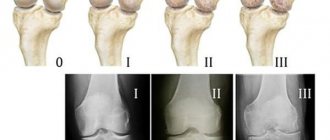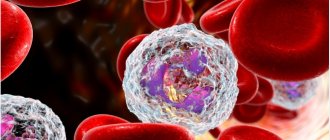Immunoglobulins, or specific protein antibodies, are the “guardians” of our immune system. When an allergen or other foreign biomaterial enters the body, they are the first to react. All immunoglobulins are divided into 5 classes. It is IgE that is responsible for the most common allergic reaction – the one that manifests itself immediately. In addition, it is involved in creating immunity against such types of helminths as: toxoplasma, nematodes, roundworms, trichinella, opisthorchid.
Accordingly, an increase or decrease in immunoglobulin E may indicate either an allergic reaction in the body or infection with helminths. Research is prescribed when there is a need for differentiated diagnosis of these diseases. A referral can be issued by a general practitioner (the child is a pediatrician), as well as an allergist, gastroenterologist, pulmonologist, hematologist or rheumatologist. Most often, an IgE test is prescribed if the patient is suspected of:
- allergic bronchial asthma;
- allergic rhinitis;
- atopic dermatitis;
- eczema;
- hay fever;
- allergies to food or medications;
- helminthic infestation.
Content
- What is immunoglobulin E
- Immunoglobulin E and allergies
- IgE level measurement
- Change in IgE levels
- Different levels of IgE in allergies
- Allergen-specific and general IgE
- Bibliography
The pathogenesis of many allergic diseases involves an “allergic” antibody or immunoglobulin E (IgE). It plays an important role in protection against parasitic diseases, especially those caused by helminths and some protozoa. IgE is not believed to play an important role in protection against bacterial infections, but is actively involved in the pathogenesis of allergic diseases, especially in the activation of mast cells and basophils, as well as in the presentation of antigens.
Effect of antihistamines
Next comes the connection of histamine with receptors in target organs and we already see the clinical manifestation of the allergy itself. Each of us has heard of antiallergic drugs or antihistamines. How do they work? They block these receptors, and the clinical picture does not manifest itself violently. But then there is a question mark. Did this cause less histamine in the blood? Of course not. Have mast cells calmed down? Of course not. Therefore, when taking antihistamines, we must understand perfectly well that in terms of managing the pathogenesis and development of the entire allergic reaction, this is the most distant consequence. We eliminate the clinical picture. I am often asked: “So, shouldn’t I take it?” Take when the allergy is already actively manifesting itself. It is in such cases that antihistamines are needed. There are a huge number of them today. I won’t voice them all, give them characteristics, much less assign them and say which ones are better and which ones are worse, because they must be selected absolutely individually.
What is immunoglobulin E
Immunoglobulin E (IgE)
is one of five types of human immunoglobulins (antibodies): IgG, IgA, IgM, IgD and IgE. All immunoglobulins consist of two light chains and two identical heavy chains. They differ in the heavy chain; for IgE it is the epsilon variant. IgE is a monomer and consists of four constant regions, unlike other immunoglobulins, which contain only three constant regions. Because of this extra region, the mass of IgE is 190 kDa, compared to 150 kDa for IgG, making it the heaviest human immunoglobulin.
Antibodies are synthesized by plasma cells. These cells are programmed to produce immunoglobulin M (IgM) by default, but undergo an "isotype switch" to produce immunoglobulin E (IgE) with the same antigen specificity under certain conditions. This process requires interactions at the cell surface between B and T cells, as well as soluble factors from different cell types.
B cell isotype switching to produce antigen-specific IgE occurs primarily in mucosal lymphoid tissues, with the largest amounts of antigen-specific IgE produced in the tonsils and adenoids, although some also occurs in peripheral tissues. Then the newly formed IgE penetrates through the tissues into the peripheral and then into the systemic circulation. More than 99% of circulating allergen-specific IgE is produced in tissues.
Genetic predisposition to the development of allergic diseases or atopy is a complex trait that is not fully understood. Levels of total serum IgE and regulation of serum IgE are highly dependent on genetic factors. Less is known about other genetic factors important for the development of allergic disease.
Preparation
Despite the high specificity and sensitivity of immunoglobulin E tests, specific preparation is required to obtain a reliable result. To differentiate allergies from other types of inflammation, blood tests for eosinophils are first performed. These specific cells are also synthesized in the body against the background of helminthic infestations, allergic reactions, and asthma.
2-3 days before the analysis, you need to start keeping a diary, which will indicate:
- all food products taken, especially those with allergenic properties (nuts, fruits, etc.);
- symptoms and manifestations indicating allergies that occurred before the study;
- contacts with non-food products and substances with allergenic properties during the designated period.
The information from the diary will provide valuable information for selecting an allergen panel. This will save money on diagnostics.
Also, to obtain a reliable result, a blood test for IgE is recommended to wait until the reaction worsens: the appearance of a rash, urticaria, runny nose, rhinitis, bronchial asthma, conjunctivitis and other manifestations. In the absence of symptoms, the results may show an incorrect picture.
Immunoglobulin E and allergies
Allergen-specific immunoglobulin E (IgE) is an integral part of the pathogenesis of allergic diseases. However, the usefulness of measuring total serum IgE or allergen-specific IgE for diagnostic and treatment purposes varies. It is important to understand that total IgE levels rarely provide information about IgE to specific allergens, and the presence of IgE to a particular allergen does not necessarily indicate a clinically significant allergic response to that substance. It is also necessary to demonstrate that the person experiences appropriate signs and symptoms when exposed to the allergen in question.
There are several different terms related to Ig E: atopy, sensitization and allergy. They all have different meanings and describe clinically different conditions.
Atopy
is a genetic predisposition to the production of specific IgE after contact with allergens.
Sensitization
refers to the production of allergen-specific IgE.
Sensitization to an allergen is not synonymous with allergy to that allergen because people can produce IgE to the allergens in a given substance but do not show symptoms when exposed to that substance. It is not clear why some people show only sensitization while others suffer from active allergic disease.
Sensitization is usually demonstrated by skin testing or in vitro immunoassay for IgE to specific allergens. Thus, sensitization is necessary but not sufficient for the development of an allergic disease. Because a person may be sensitized to an allergen but not react to it upon exposure, it is wise to limit allergy testing to those allergens indicated by the medical history.
About allergies
said to occur when people have both allergen-specific IgE and develop characteristic symptoms when exposed to substances containing that allergen. Consequently, there are more people who are simply sensitive to an allergen than people who react to it with a specific symptom complex. This was illustrated in the 2005–2006 US National Health and Nutrition Examination Survey (NHANES), in which more than 8,000 people from the general population were surveyed and tested (using in vitro blood tests) for sensitization to 19 common inhalant allergens.
Specific IgE antibodies to at least one allergen were present in 44%, whereas only 34% had symptoms suggestive of allergic disease. Similar results have been documented for food allergies. According to a population-based cohort study in the UK, 12% of children were sensitized to peanuts by age eight, but only 2% had an actual allergy.
A sensitized person may develop allergic symptoms upon repeated exposure to the relevant allergen if the allergen is able to bind to IgE on the surface of mast cells and basophils in sufficient quantities to cause what is called cross-linking of IgE molecules. Cross-linking of sufficient numbers of IgE receptors results in the generation of activating signals. Once activated, mast cells and basophils release preformed and newly formed chemical and protein mediators that directly or indirectly lead to the signs and symptoms of allergic reactions. These mediators include histamine, prostaglandins, leukotrienes, platelet activating factor, cytokines and others.
Common allergic diseases include allergic asthma, allergic rhinitis, atopic dermatitis, food allergies, stinging insect allergies, animal dander allergies, and drug allergies, including anaphylaxis.
Indications for the study
Indications for a blood test for immunoglobulin E are diseases and conditions associated with this substance. These include:
- dermatographism - a specific skin reaction in the form of urticaria or redness in places that came into contact with hard, blunt objects (literally drawings on the skin), disappearing spontaneously 30-40 minutes after occurrence;
- repeatedly exacerbating dermatitis, widespread throughout the body;
- increased skin sensitivity to household chemicals, cosmetics, food products;
- increased sensitivity to food, expressed by intestinal symptoms or dermatitis;
- long-term exacerbation of sinusitis, rhinitis, bronchitis and attacks of bronchial asthma of unknown origin.
Indications for the study also include:
- an allergic reaction, the source of which cannot be determined from anamnesis, including by keeping a daily diary of an allergy sufferer;
- unclear or questionable results of skin tests that did not give a clear picture of the degree of sensitization to a specific allergen, or giving reason to assume a false negative result;
- impossibility of performing skin tests - history of increased sensitivity to reagents, high risk of anaphylactic shock, taking antihistamines with the impossibility of stopping them even for a short time;
- patient's reluctance to do skin tests.
Also, an analysis for immunoglobulin E is carried out to clarify the diagnosis, when it is necessary to establish the specificity of the allergen and the degree of sensitivity of the body to it. This data is necessary to create an effective treatment plan.
Good to know: The examination is not carried out when skin tests are sufficient to make an accurate diagnosis.
IgE level measurement
Total IgE.
Levels of total immunoglobulin E (IgE) are often measured using a sandwich assay. In this method, an anti-IgE antibody binds to a solid support. The patient's serum is added and then the unbound protein is washed away. A second labeled anti-IgE antibody is added and the amount bound to the patient's IgE is measured. Total serum IgE levels are expressed in international units or nanograms per milliliter (1 IU/mL = 2.44 ng/mL). IgE tests are calibrated against the World Health Organization's third International IgE Reference Preparation (WHO IgE-IRP).
Allergen-specific IgE.
The first commercial test for allergen-specific IgE was the radioallergosorbent test (RAST). Bound allergen-specific IgE was detected using radioiodine and quantified using a gamma counter. The term "RAST" is still often used to refer to in vitro tests for allergen-specific IgE, although modern methods use enzymes instead of radionucleotides. A number of other technical advances in assay technology have dramatically increased the sensitivity and specificity of allergen-specific IgE measurements. The terms “in vitro IgE antibody assay” or “allergen-specific IgE immunoassay” more accurately characterize the test options that are most common in the world:
- HYTEC-288 is a colorimetric assay using a solid phase support on a paper disk. It is increasingly being replaced by the Falcon laboratory automaton.
- ImmunoCAP is a fluorinated immunoassay with a solid-phase cellulose sponge matrix.
- The Immulite chemiluminescent assay contains a biotinylated allergen and a solid phase of avidin particles.
The lower limit of detection of allergen-specific IgE is lower than that of total IgE. Most laboratories use a lower limit of approximately 0.1 to 0.35 IU/mL.
Types of allergological profiles for research
The following allergological profiles can be tested in clinical laboratories:
- household allergens (panel or individual allergens - house dust, micro mites);
- animal hair or epithelium (panel or individual allergens - cat, dog hair, hamster or guinea pig hair);
- fungal allergens (panels);
- pollen allergens (panels characteristic of the patient’s place of residence);
- food allergens (individual allergens to exclude irritants from the diet);
- medicinal allergens (as prescribed by doctors).
Change in IgE levels
Normal levels.
Immunoglobulin E (IgE) has the lowest serum concentration of all immunoglobulins, approximately 150 ng/mL (about 62 IU/mL), which is approximately 66,000 times lower than the serum concentration of immunoglobulin G (IgG). Normal serum levels range from approximately 0 to 100 IU/mL.
The half-life of free IgE in serum is about two days, although once IgE binds to mast cells, the half-life increases to about two weeks due to the high affinity of this interaction.
Ig E level in childhood
. It is believed that IgE does not cross the placenta. Therefore, a woman's sensitivity to allergens is not directly passed on to her offspring through IgE transmission. However, allergens can be transmitted transplacentally, and the fetus can produce allergen-specific IgE. Conventional allergen-specific IgE immunoassays cannot distinguish infant from maternal IgE, although a highly sensitive microarray assay has demonstrated that infants can have IgE specific to food and inhalant allergens already present at birth.
Levels increase from birth and peak during adolescence. Levels of preschool education do not correlate well with levels at later ages. Factors associated with elevated total IgE include male gender, African American race, poverty, elevated serum cotinine levels (reflecting exposure to tobacco smoke), less than a high school education, and obesity. However, a 2014 study found no gender differences in IgE levels.
In individuals with atopy, total serum IgE levels may fluctuate. For example, in pollen-sensitized individuals, serum IgE levels peak four to six weeks after the peak pollen season and then decline until the next pollen season.
Breast-feeding.
Human breast milk contains small amounts of IgE. However, a nursing mother's serum IgE level appears to influence her baby's serum level. Babies of mothers with high IgE levels who breastfed their babies for four months or longer had higher total IgE levels than formula-fed babies or babies breastfed for less than four months. In contrast, infants breastfed by mothers with low IgE levels are more likely to have lower IgE levels than formula-fed infants or infants breastfed for less than four months. Paternal IgE levels had no significant effect on children's IgE levels.
Decrease in total IgE
. Most tests can only detect IgE levels between 2 and 5 IU/mL, with lower levels being characterized as undetectable. Accordingly, IgE deficiency was defined as a level of <2.5 IU/mL.
In humans, decreased IgE levels may be associated with low levels of other immunoglobulins with sinopulmonary disease and with an increased prevalence of autoimmune diseases. It is unclear whether isolated IgE deficiency in humans is a clinically significant immunodeficiency or a marker of immune dysregulation.
Increased total IgE
. Elevated serum IgE is observed in allergic diseases, some primary immunodeficiencies, parasitic and viral infections, some inflammatory diseases, some malignancies and some other disorders.
Preparing for analysis
In order for the results of the study to be reliable, blood from a vein is donated on an empty stomach. The patient should be properly prepared:
- do not consume drinks or food before collecting biological material (you can only drink still water);
- 2-3 days before taking a blood test, avoid emotional and physical fatigue and overwork;
- 48 hours before donating blood, it is important not to eat fried, fatty, salty and spicy foods, and avoid alcoholic beverages;
- Do not smoke during the 24 hours preceding the study.
Before collecting the material, it is important not to use any medications for 14 days. You cannot donate blood for immunoglobulins on the day when physiotherapeutic procedures, X-ray or ultrasound examinations were carried out.
Different levels of IgE in allergies
A total serum IgE level of 100 international units/mL (IU/mL) is generally considered the upper limit of normal for older adolescents and adults. Elevated levels of total serum IgE are observed in several types of diseases, including allergic diseases, some primary immunodeficiencies, parasitic and viral infections, some inflammatory diseases, some malignancies and a number of other diseases. Thus, elevated total serum IgE is not specific for allergic disease.
Increased level of total serum IgE.
Many patients with allergic disorders have elevated total IgE levels, but there is no defined cutoff value that distinguishes patients with allergic disease from those without. Total IgE alone is rarely sufficient to diagnose an allergic disease. The following studies are illustrative:
- Adults with IgE >66 IU/mL have a 37-fold greater risk of developing allergen-specific IgE antibodies to aeroallergens compared with patients with the lowest total IgE levels.
- In one study, school-age children had a mean IgE level of 51 IU/mL. In children with atopic dermatitis and asthma, the average IgE level was 985 IU/ml; those with asthma only, 305 IU/ml; patients with eczema only - 273 IU/ml, and patients with allergic rhinitis - 171 IU/ml.
- Among atopic patients of all ages, IgE levels are highest in patients with atopic dermatitis, followed by atopic asthma, chronic allergic rhinitis, and seasonal allergic rhinitis.
- Using a total serum IgE level of 100 IU/mL, the sensitivity was 78% for patients with asthma and 60% for rhinitis to distinguish allergic from nonallergic patients. 20% of patients were incorrectly classified.
Decreased or normal levels of total IgE.
Low levels of total serum IgE cannot be used to rule out the presence of atopic disease due to the significant overlap in total serum IgE between atopic and nonatopic populations. Patients with low or normal serum IgE levels may still have local tissue production of allergen-specific IgE.
Treatment of patients with high immunoglobulin E levels
Currently, there are no drugs that directly lower the concentration of immunoglobulin E in the blood. The basis for lowering serum immunoglobulin levels is the elimination of the allergen that caused a negative reaction from the immune system. After establishing an accurate diagnosis, immunologists at the Yusupov Hospital prescribe drug therapy.
This includes antihistamines. Antiallergic drugs suppress the functioning of those receptors that react to the immediate allergen. Skin care ointments and creams help eliminate external symptoms of the disease.
For patients with immunoglobulin-dependent allergies, immunity is increased by gradually increasing the doses of allergens that are introduced into the body. This allows for a long-term lull in allergic manifestations. If there are parasites in the body, anthelmintics are prescribed.
Make an appointment with an immunologist by calling the clinic. The contact center of the Yusupov Hospital is open 24 hours a day, 7 days a week. After the examination, the doctor will prescribe a blood test for the content of immunoglobulin E, conduct tests with allergens, establish an accurate diagnosis and prescribe treatment.
Allergen-specific and general IgE
The ratio of allergen-specific immunoglobulin E (IgE) to total IgE has been called “specific activity.” Its utility has been studied in diagnosing several allergic disorders and predicting individual response to monoclonal antibody therapy (omalizumab). One study found that specific activity is no more useful than allergen-specific IgE alone in diagnosing food allergies. However, in the treatment of asthma with omalizumab, specific activity exceeding 3-4% predicted a decrease in response to omalizumab therapy. The ratio of allergen-specific IgE to total IgE remains primarily a clinical research tool; its overall practical utility has not yet been established.
Why is an elevated level of immunoglobulin dangerous?
Immunoglobulin IgE is a structural part of the body's natural immune defense. Its initial role is to neutralize pathogenic organisms (bacteria, viruses and helminths) on mucosal surfaces. They attract immunoglobulins G, eosinophils, neutrophils and other biologically active substances to the area where pathogens invade, getting rid of the threat. Therefore, it would be incorrect to talk about the harm of IgE during the normal functioning of the immune system.
A completely different picture unfolds with an atypical increase in IgE in response to their reaction with allergens. In this case, the immunoglobulin “raises troops” against a non-existent enemy, and the cells called upon to protect the body attack its own tissues. However, even with its increase, we cannot say that it is IgE that threatens human health. First of all, it is a marker indicating existing disorders that can be corrected under the guidance of a competent doctor.
Bibliography
- Arnold JN, Wormald MR, Sim RB, et al. The impact of glycosylation on the biological function and structure of human immunoglobulins // Annu Rev Immunol 2007; 25:21.
- Balzar S, Strand M, Rhodes D, Wenzel SE. IgE expression pattern in lung: relation to systemic IgE and asthma phenotypes // J Allergy Clin Immunol 2007; 119:855.
- Bellou A, Kanny G, Fremont S, Moneret-Vautrin DA. Transfer of atopy following bone marrow transplantation // Ann Allergy Asthma Immunol 1997; 78:513.
- Bernstein IL, Li JT, Bernstein DI, et al. Allergy diagnostic testing: an updated practice parameter // Ann Allergy Asthma Immunol 2008; 100:S1.
- Cameron L, Gounni AS, Frenkiel S, et al. S epsilon S mu and S epsilon S gamma switch circles in human nasal mucosa following ex vivo allergen challenge: evidence for direct as well as sequential class switch recombination // J Immunol 2003; 171:3816.
- Coker HA, Durham SR, Gould HJ. Local somatic hypermutation and class switch recombination in the nasal mucosa of allergic rhinitis patients // J Immunol 2003; 171:5602.
- Cooper AM, Hobson PS, Jutton MR, et al. Soluble CD23 controls IgE synthesis and homeostasis in human B cells // J Immunol 2012; 188:3199.
- Dullaers M, De Bruyne R, Ramadani F, et al. The who, where, and when of IgE in allergic airway disease // J Allergy Clin Immunol 2012; 129:635.
- Eckl-Dorna J, Pree I, Reisinger J, et al. The majority of allergen-specific IgE in the blood of allergic patients does not originate from blood-derived B cells or plasma cells // Clin Exp Allergy 2012; 42:1347.
- Egger C, Horak F, Vrtala S, et al. Nasal application of rBet v 1 or non-IgE-reactive T-cell epitope-containing rBet v 1 fragments has different effects on systemic allergen-specific antibody responses // J Allergy Clin Immunol 2010; 126:1312.
- Fregonese L, Patel A, van Schadewijk A, et al. Expression of the high-affinity IgE receptor (FcepsilonRI) is increased in fatal asthma // Am J Respir Crit Care 2004; 169:A297.
- Geha RS, Jabara HH, Brodeur SR. The regulation of immunoglobulin E class-switch recombination // Nat Rev Immunol 2003; 3:721.
- Gergen PJ, Arbes SJ Jr, Calatroni A, et al. Total IgE levels and asthma prevalence in the US population: results from the National Health and Nutrition Examination Survey 2005-2006 // J Allergy Clin Immunol 2009; 124:447.
- Granada M, Wilk JB, Tuzova M, et al. A genome-wide association study of plasma total IgE concentrations in the Framingham Heart Study // J Allergy Clin Immunol 2012; 129:840.
- Hamilton RG, Franklin Adkinson N Jr. In vitro assays for the diagnosis of IgE-mediated disorders // J Allergy Clin Immunol 2004; 114:213.
- Hamilton RG, Williams PB, Specific IgE Testing Task Force of the American Academy of Allergy, Asthma & Immunology, American College of Allergy, Asthma and Immunology. Human IgE antibody serology: a primer for the practicing North American allergist/immunologist // J Allergy Clin Immunol 2010; 126:33.
- Hamilton RG. Accuracy of US Food and Drug Administration-cleared IgE antibody assays in the presence of anti-IgE (omalizumab) // J Allergy Clin Immunol 2006; 117:759.
- Hibbert RG, Teriete P, Grundy GJ, et al. The structure of human CD23 and its interactions with IgE and CD21 // J Exp Med 2005; 202:751.
- Holgate S, Casale T, Wenzel S, et al. The anti-inflammatory effects of omalizumab confirm the central role of IgE in allergic inflammation // J Allergy Clin Immunol 2005; 115:459.
- Kamemura N, Tada H, Shimojo N, et al. Intrauterine sensitization of allergen-specific IgE analyzed by a highly sensitive new allergen microarray // J Allergy Clin Immunol 2012; 130:113.
- Lynch NR, Hagel IA, Palenque ME, et al. Relationship between helminthic infection and IgE response in atopic and nonatopic children in a tropical environment // J Allergy Clin Immunol 1998; 101:217.
- Martins TB, Bandhauer ME, Bunker AM, et al. New childhood and adult reference intervals for total IgE // J Allergy Clin Immunol 2014; 133:589.
- McSharry C, Xia Y, Holland CV, Kennedy MW. Natural immunity to Ascaris lumbricoides associated with immunoglobulin E antibody to ABA-1 allergen and inflammation indicators in children // Infect Immun 1999; 67:484.
- Moffatt MF, Gut IG, Demenais F, et al. A large-scale, consortium-based genomewide association study of asthma // N Engl J Med 2010; 363:1211.
- Niederberger V, Ring J, Rakoski J, et al. Antigens drive memory IgE responses in human allergy via the nasal mucosa // Int Arch Allergy Immunol 2007; 142:133.
- Oettgen HC, Geha RS. IgE regulation and roles in asthma pathogenesis // J Allergy Clin Immunol 2001; 107:429.
- Pien GC, Orange JS. Evaluation and clinical interpretation of hypergammaglobulinemia E: differentiating atopy from immunodeficiency // Ann Allergy Asthma Immunol 2008; 100:392.
- Poole JA, Meng J, Reff M, et al. Anti-CD23 monoclonal antibody, lumiliximab, inhibited allergen-induced responses in antigen-presenting cells and T cells from atopic subjects // J Allergy Clin Immunol 2005; 116:780.
- Schroeder HW Jr, Cavacini L. Structure and function of immunoglobulins // J Allergy Clin Immunol 2010; 125:S41.
- Selb R, Eckl-Dorna J, Twaroch TE, et al. Critical and direct involvement of the CD23 stalk region in IgE binding // J Allergy Clin Immunol 2017; 139:281.
- Shade KT, Platzer B, Washburn N, et al. A single glycan on IgE is indispensable for initiation of anaphylaxis // J Exp Med 2015; 212:457.
- Stone KD, Prussin C, Metcalfe DD. IgE, mast cells, basophils, and eosinophils // J Allergy Clin Immunol 2010; 125:S73.
- Takhar P, Corrigan CJ, Smurthwaite L, et al. Class switch recombination to IgE in the bronchial mucosa of atopic and nonatopic patients with asthma // J Allergy Clin Immunol 2007; 119:213.
- Takhar P, Smurthwaite L, Coker HA, et al. Allergen drives class switching to IgE in the nasal mucosa in allergic rhinitis // J Immunol 2005; 174:5024.
- Thorpe SJ, Heath A, Fox B, et al. The 3rd International Standard for serum IgE: international collaborative study to evaluate a candidate preparation // Clin Chem Lab Med 2014; 52:1283.
- Tsicopoulos A, Joseph M. The role of CD23 in allergic disease // Clin Exp Allergy 2000; 30:602.
- Vercelli D. Genetic regulation of IgE responses: Achilles and the tortoise // J Allergy Clin Immunol 2005; 116:60.
- Walker SA, Riches PG, Wild G, et al. Total and allergen-specific IgE in relation to allergic response pattern following bone marrow transplantation // Clin Exp Immunol 1986; 66:633.
- Watanabe N, Katakura K, Kobayashi A, et al. Protective immunity and eosinophilia in IgE-deficient SJA/9 mice infected with Nippostrongylus brasiliensis and Trichinella spiralis // Proc Natl Acad Sci USA 1988; 85:4460.
- Weidinger S, Gieger C, Rodriguez E, et al. Genome-wide scan on total serum IgE levels identifies FCER1A as novel susceptibility locus // PLoS Genet 2008; 4:e1000166.










